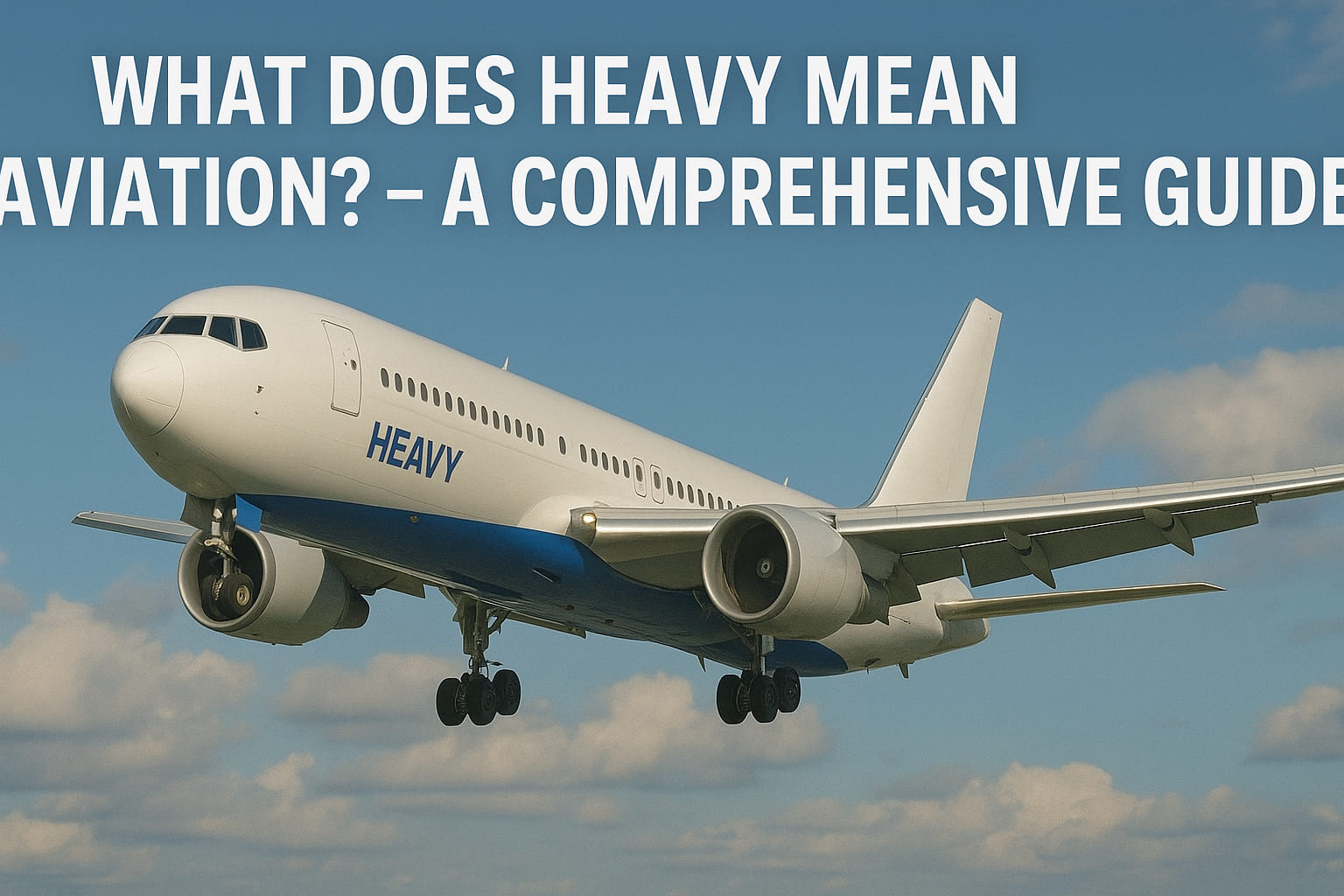Hearing a pilot add the word ‘heavy’ to their call sign is more than just aviation jargon; it’s a critical safety warning. This classification is for aircraft with a high takeoff weight, which generate a powerful and invisible phenomenon known as wake turbulence. This simple term is a crucial tool for ensuring safety in crowded airspace.
👉 Check out the offer: airplane engine stands rent 👈
Understanding the Term ‘Heavy’ in Aviation
Anyone who has tuned into air traffic control communications has likely heard the term “heavy” appended to a call sign, such as “United 915 Heavy.”
The primary reason for this designation is wake turbulence: a powerful, invisible trail of rotating air masses, or vortices, spun from an aircraft’s wing tips.
To manage this risk, the ‘heavy’ suffix is a mandatory part of radio communications, acting as an immediate warning to air traffic controllers and other pilots.
Weight Classifications in Aviation
While the ‘heavy’ designation is crucial, it belongs to a broader aircraft classification system established by aviation authorities like the FAA.
These classifications offer a quick gauge of an aircraft’s size and potential impact on surrounding air traffic. Here’s how the FAA breaks them down:
- Small: This category includes aircraft with an TOW of 41,000 pounds or less. Most private planes, turboprops, and smaller regional jets fit in this group.
- Large: An aircraft is considered ‘Large’ if its TOW is more than 41,000 pounds but less than 300,000 pounds. This is a wide category that includes many of the most common commercial airliners, such as the Boeing 737 and Airbus A320 families.
- Heavy: This classification is for aircraft with an TOW of 300,000 pounds or more.
- Super: This is a special and exclusive category created for the most massive aircraft, which generate the most extreme wake turbulence. It currently includes the Airbus A380 and formerly the Antonov An-225.
Because each weight class generates a different level of wake turbulence, controllers rely on this system to apply the correct separation standards and ensure the safety of all aircraft.
Examples of Heavy Aircraft
The ‘Heavy’ classification includes many of the world’s most recognizable long-haul passenger airliners and massive cargo freighters.
Some of the most common examples include:
- Boeing 747: Often called the “Queen of the Skies,” this legendary four-engine jumbo jet helped make long-haul international travel accessible.
- Boeing 777: A highly successful long-range, wide-body twin-engine jet known for its powerful engines and capacity.
- Boeing 787 Dreamliner: A modern and fuel-efficient aircraft, with its larger variants (like the 787-9 and 787-10) easily exceeding the 300,000-pound TOW.
- Airbus A330 & A340: These wide-body aircraft are workhorses for many international airlines, flying both passenger and cargo routes.
- Airbus A350: Airbus’s modern, long-range competitor to the Boeing 777 and 787, celebrated for its efficiency and advanced technology.
- McDonnell Douglas MD-11/DC-10: Classic three-engine wide-body jets, now primarily used as cargo freighters by companies like FedEx and UPS.
Wake Turbulence and Its Risks
Minimizing Wake Turbulence Risks
To counter the dangers of wake turbulence, the aviation industry employs a strategy based on close coordination between pilots and Air Traffic Control (ATC).
ATC enforces mandated separation distances that vary based on the weight classes of the aircraft involved, and pilots share an equal responsibility for vigilance.

